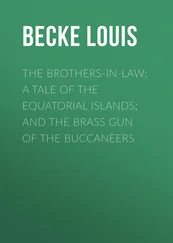Diego Aduarte - The Philippine Islands, 1493-1898 - Volume 32, 1640
Здесь есть возможность читать онлайн «Diego Aduarte - The Philippine Islands, 1493-1898 - Volume 32, 1640» — ознакомительный отрывок электронной книги совершенно бесплатно, а после прочтения отрывка купить полную версию. В некоторых случаях можно слушать аудио, скачать через торрент в формате fb2 и присутствует краткое содержание. Жанр: foreign_antique, foreign_prose, Историческая проза, на английском языке. Описание произведения, (предисловие) а так же отзывы посетителей доступны на портале библиотеки ЛибКат.
- Название:The Philippine Islands, 1493-1898: Volume 32, 1640
- Автор:
- Жанр:
- Год:неизвестен
- ISBN:нет данных
- Рейтинг книги:4 / 5. Голосов: 1
-
Избранное:Добавить в избранное
- Отзывы:
-
Ваша оценка:
- 80
- 1
- 2
- 3
- 4
- 5
The Philippine Islands, 1493-1898: Volume 32, 1640: краткое содержание, описание и аннотация
Предлагаем к чтению аннотацию, описание, краткое содержание или предисловие (зависит от того, что написал сам автор книги «The Philippine Islands, 1493-1898: Volume 32, 1640»). Если вы не нашли необходимую информацию о книге — напишите в комментариях, мы постараемся отыскать её.
The Philippine Islands, 1493-1898: Volume 32, 1640 — читать онлайн ознакомительный отрывок
Ниже представлен текст книги, разбитый по страницам. Система сохранения места последней прочитанной страницы, позволяет с удобством читать онлайн бесплатно книгу «The Philippine Islands, 1493-1898: Volume 32, 1640», без необходимости каждый раз заново искать на чём Вы остановились. Поставьте закладку, и сможете в любой момент перейти на страницу, на которой закончили чтение.
Интервал:
Закладка:
In addition to these who are baptized in sickness, many are baptized in health and take back the news of the gospel to their own country. In this way, it is hoped, the entry of preachers into China will be somewhat facilitated, if it is once known that we are persons who, in addition to loving and helping them, are not desirous for our temporal profit, but for the good of their souls. This is an argument of great weight with the Chinaman, who is excessively avaricious, and hence regards as a very divine virtue the contempt of that which he esteems so highly. Since they are very intelligent, they are easily persuaded that that is truth which we preach to them as to the great reward in the other life for those who are good, since they see that their preachers take such pains and undergo such penances to become good, and despise all temporal gain in the firm hope of an eternal one. If their eternal reward were not to be much the vaster, great would be their imprudence to cast aside for it all temporal reward; and they would be, as the apostle has said, of all men most miserable.
Father Fray Bartholome Martynez afterward erected on the same site a sumptuous and handsome church, which was intentionally made large and capacious, that there might be room in it for the many whom he hoped to baptize; and beautiful, that the very magnificence of the edifice might give some sign by its appearance of whose it was. In order that it might please the Chinese better, it was constructed entirely after the manner of the best buildings in China, out of wood, the pieces framed together with joints, without any nails in the entire frame. This was accomplished, in spite of the fact that the number of pieces which entered into the frame came to more than three thousand. They were wrought with marvelous skill, and with superior craftsmanship; indeed, before they began to be put in place they were all shaped, with their joints so fitted that, although the architect at the time of erecting the building happened to be unable on account of illness to rise from his bed, and had to give his directions from it as to what had to be done, yet everything was found to be so exact that his presence was not needed. Everything was fitted exactly as it was planned and worked out by the designer from the beginning. This is something which aroused great admiration in the Spanish architects who saw it, and they were amazed, and with reason. It is reckoned a matter worthy of the wisdom given by God to Solomon that the same thing is recounted of the temple which he built, as is narrated in holy scripture. The architect was a heathen, very old and infirm; but God prolonged his life until this work was finished. Afterward, as his illness grew worse, he asked for holy baptism; and, having received it devoutly, he died happy in being a Christian, and was buried in the church which he had built for God.
[While the church was being built, some very notable events happened. One Sunday, after the Christians had heard mass, they and a number of heathen who helped them were dragging a very large beam which was to serve as a column in the building. As they went down a little hill, it began to roll on some round sticks which they had placed under it in order that they might move it with less difficulty, and came at one of those who were dragging it with such force that, as it seemed, he could in no way avoid being caught by it. The Lord heard the prayers of some religious who were present, and delivered him from his danger. In the same church the workmen were setting up the beams which were to support the four corners of the transept like columns – which beams were much larger, longer, and thicker than any of the others. A great number of people were stationed on each of the four sides of one, to draw it so that it might go straight. The cables which they used were new and heavy, and there was a workman seated on the head of the beam to watch the hitches of the cables to be sure that they did not slip. The weight of the beam was so great that one of the cables gave way, and when it was broken the others began to become loose. The workmen dropped their work and fled in alarm, leaving the man on the head of the beam beyond help, as it seemed. Father Fray Bartholome Martinez prayed to the Lord for this man, and the beam rested upon some bamboos standing there, which were strong, but not strong enough to carry such a weight; and the man got down by them unhurt, but with his blood curdled by fright. The church was finished and was most beautiful, being a notable piece of work in its style. It caused great joy to the Spaniards, and to the Chinese, both Christian and heathen. In the course of time another event which greatly edified these Chinese occurred; for on Monday, March 13, 1628, at one o’clock at night, a fire broke out in the Parian which burnt down practically the whole of it – since it was at that time built of reeds and nipa, or of dry boards, which burn like a torch. The only houses saved were some which were protected by green trees, and some other small ones which were somewhat isolated. The fire bore directly toward the church, and had already begun to scorch the wood of it, when the religious carried out the image of our Lady of the Rosary, and turned her face toward the fire. The wind instantly changed, and the church was saved. Although in the construction of this most beautiful church care had been taken to build it of durable wood, yet within a few years some of it rotted, and it seemed as if it would be with this church as with the others. Hence it was deemed necessary to tear it down, for fear of accident; and another church was built, with strong pillars of stone.] Since this is very near the city, we did not fail to build it with stronger frame. But it is very beautifully decorated, its walls being covered from top to bottom with paintings, in which is depicted everything which may instruct these heathen in the knowledge of that which is of consequence for them to understand. There is represented the whole life of Christ our Lord, and His most holy Mother; there are many pictures of the judgment, purgatory, glory, and hell; much instruction as to the seven holy sacraments; many miracles pertaining to them, and especially to the greatest of all; many martyrs, and many holy examples. All this, in addition to beautifying the church, is of great use, serving as devout books wherein these people (who are very inquisitive) may see and understand that which is taught to them by word of mouth; and very great benefit is thus wrought for them. Many incidents have occurred which have made clear the great usefulness of having this church in the midst of this idolatrous population, to preach the true God with so loud a voice that it may be heard in the great kingdom of China, and may dispose it to be converted.
Конец ознакомительного фрагмента.
Текст предоставлен ООО «ЛитРес».
Прочитайте эту книгу целиком, купив полную легальную версию на ЛитРес.
Безопасно оплатить книгу можно банковской картой Visa, MasterCard, Maestro, со счета мобильного телефона, с платежного терминала, в салоне МТС или Связной, через PayPal, WebMoney, Яндекс.Деньги, QIWI Кошелек, бонусными картами или другим удобным Вам способом.
1
i. e. , “In the beginning was the Word.” The other quotation reads, in English, “May the reading of the gospel be health and protection to thee.”
Читать дальшеИнтервал:
Закладка:
Похожие книги на «The Philippine Islands, 1493-1898: Volume 32, 1640»
Представляем Вашему вниманию похожие книги на «The Philippine Islands, 1493-1898: Volume 32, 1640» списком для выбора. Мы отобрали схожую по названию и смыслу литературу в надежде предоставить читателям больше вариантов отыскать новые, интересные, ещё непрочитанные произведения.
Обсуждение, отзывы о книге «The Philippine Islands, 1493-1898: Volume 32, 1640» и просто собственные мнения читателей. Оставьте ваши комментарии, напишите, что Вы думаете о произведении, его смысле или главных героях. Укажите что конкретно понравилось, а что нет, и почему Вы так считаете.












